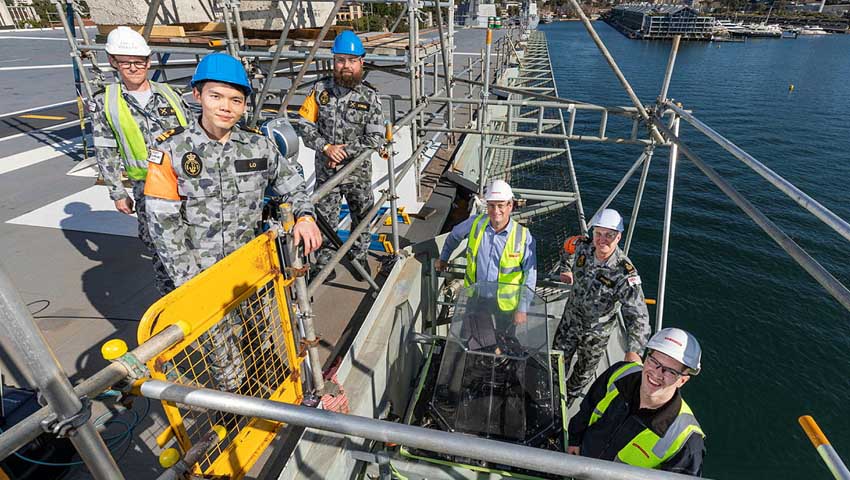Keeping the growing capability of the Royal Australian Navy fleet combat ready to meet the requirements of government, the Fleet Support Unit (FSU) plays a critical role, working with industry and defence to ensure that Navy is capable of completing its mission.
To continue reading the rest of this article, please log in.
Create free account to get unlimited news articles and more!
2020 has been a uniquely challenging year, but the men and women of Navy’s Fleet Support Unit (FSU) have worked hard to keep Australia’s warships operationally ready.
FSU has more than 700 people around the country, responsible for keeping the major and minor fleet units sea-worthy, including both scheduled and corrective maintenance.
Around 300 members of this workforce are employed at FSU - South East, based at Garden Island in Sydney. Since the Reduced Activity Period (RAP) was overtaken by the bushfire emergency, the group has been consistently busy, readying ships to sail and adjusting to program changes.
Executive Manager of FSU - South East, Lieutenant William Grills, said the team had worked well to deliver for the Fleet in unusual circumstances.
"We’ve had to carefully manage and re-prioritise the needs of a lot of ships due to program changes but we’ve successfully completed six projects concurrently, ensuring HMA Ships Brisbane, Hobart, Stuart, Adelaide, Canberra, and Choules were ready for sea. We’ve also supported the transition of two former Australian warships to new owners," LEUT Grills explained.
While many workplaces have been able to implement work-from-home arrangements and still achieve their core business, FSU is staffed primarily by technical sailors performing hands-on work.
The transition to a safe work environment was challenging but new approaches have proven successful at FSU - South East.
LEUT Grills added, "We have a very large workforce in Sydney and we could not socially distance in our workspace. Instead, we transitioned the workforce into two split shifts, to ensure social distancing in our workshops. It also means our people can catch public transport less frequently during peak travel times and also better manage fatigue and time at home."
The FSU plays a critical role in delivering the Chief of Navy's transformative maintenance, sustainment and modernisation program, Plan Galileo, to keep the growing capability of the RAN fleet at the cutting edge of capability.
Plan Galileo aims to achieve three key objectives by 2025: to build a new approach to integrated capability life cycle management; to leverage new technologies and learning to improve productivity and promote increased levels of innovation, collaboration and knowledge-sharing in the maritime domain; and to generate the skilled workforce we need to meet this challenge.
Rear Admiral Wendy Malcolm, Head Maritime Systems, reiterated her vision as a new way of thinking that fundamentally changes how Navy carries out sustainment of the fleet saying, "The aim of Plan Galileo is that in 2025, Defence will operate in a nationally integrated sustainment environment that consistently provides affordable, reliable and fit for purpose systems and ships to Navy.
"The project is also focused on effective utilisation, growth and support of Navy’s technical and logistics mastery, including ongoing involvement of Fleet Support Units throughout Australia in the delivery of maintenance and our Maritime Logistics personnel in the provision of integrated logistics support and 21st century supply chain development and management."
Plan Galileo sees sustainment as a whole-of-life concept, considering sustainment needs at the design stage of a vessel. It considers capability life cycle management from the outset as an underlying principle of continuous sustainment, underpinned by the need to support a seamless transition from acquisition to sustainment.
It reworks the support solution to one that adopts a fleet view, which drives commonality across sustainment and minimises duplication across the maritime domain.

 Login
Login







